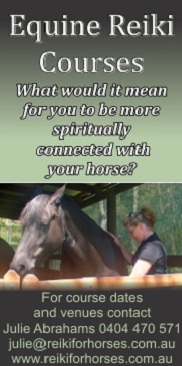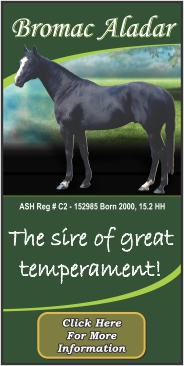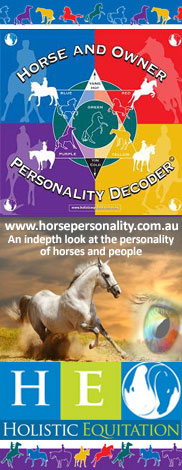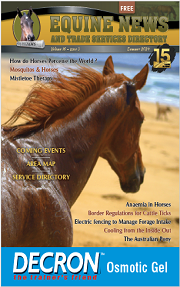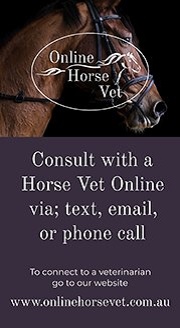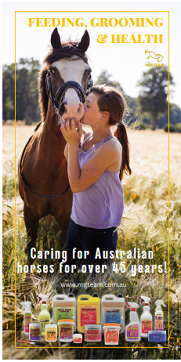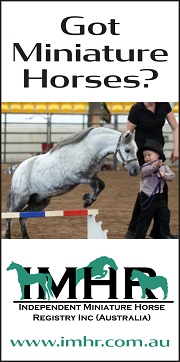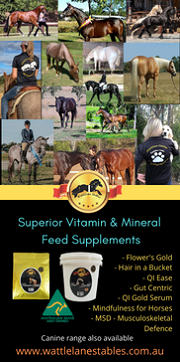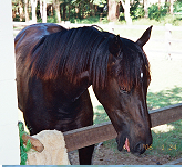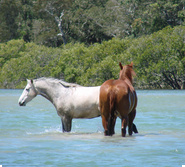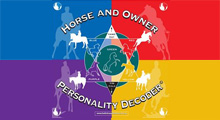Studies on the neurophysiology of emotion show that human beings exhibit stress responses in the presence of incongruent people. In Social Intelligence: The New Science of Human Relationships, emotional intelligence pioneer Daniel Goleman cites research proving that not only does a person’s blood pressure escalate when he tries to suppress feeling, the blood pressure of those interacting with him also rises. Basically, unless you’re a sociopath, your blood pressure, heart rate, and breathing intensify when you’re frightened or angry, even when you’re wearing your best poker face. It takes extra energy to hide these feelings, which adds to the anxiety radiating from your body, through whatever complex process scientists are only now beginning to uncover. Lie detector tests measure arousal fluctuations. Yet, you don’t have to be hooked up to a machine to reveal a hidden state of mind. Living beings are hard-wired to transmit and receive this information at a distance. Our culturally-induced emphasis on verbal communication lessens awareness of this valuable information over time, but anyone who retains or reclaims use of this natural ability appears downright psychic compared to the rest of the population.
As prey animals, the volume of this recently discovered “sixth” sense is turned way up in horses, who become noticeably agitated in the presence of people who are incongruent, who try to cover anger, fear, or sadness with an appearance of well being. This is not an equine judgment of our tendency to lie about what we’re really feeling; it’s a reflection of emotion’s physiology—and its contagious nature. Horses show signs of stress when their human handlers try to suppress emotion, then calm down the moment the handler openly acknowledges that feeling. By making the fear or anger conscious, by becoming congruent, the handler effectively lowers his own blood pressure, even if only slightly. But it’s enough to drop the horse’s blood pressure in response, which the animal demonstrates by sighing, licking and chewing, and/or lowering his head.
The easiest way to become congruent in the presence of your horse is to admit (even at a whisper that no one else can hear) that you’re afraid, angry, frustrated, or confused. Your horse won’t understand the words, of course, but your body will register positive physiological changes that your mount can read nonverbally, and he will be less likely to spook as a result.
The good news is that authentic positive feelings are contagious too. A person who truly feels peaceful in situations that unnerve others can have a calming effect on everyone around her. This is a key skill in becoming a great rider—or a great leader of human beings for that matter.
Research into the human-equine relationship confirms that horses and riders don’t have to see any evidence of movement or gesture to affect each other physiologically. While this may seem obvious when you’re riding a horse—you can feel what’s going on in his body and vice versa—emotions and sensations are contagious even when you appear to be walking calmly beside each other.
What we’re talking about is a mild form of telepathy, which comes from the same root as empathy and sympathy. Telepathy literally means feeling at a distance. Because we’re methodically and quite relentlessly taught to dissociate from the environment and our own bodies, modern humans downplay rather than develop this ability, but the information still manages to leak through now and then in the form of “gut feelings” and other forms of intuition.
So what in the world are we supposed to do with troublesome feelings if we can’t actually hide them? As it turns out, we can look to our horses for the answer. These highly sensitive animals use emotion as information. Rather than suppressing uncomfortable feelings or outlandishly expressing them, horses follow a simple four-point method that any human is smart enough to learn: 1.) They feel the emotion in its purest form. 2.) They get the message behind the emotion. 3.) They change something in response to that message. 4.) They relax and go back to grazing.
In other words, they don’t hang onto the story, endlessly ruminating over the details of uncomfortable situations.
By collaborating with the nonverbal wisdom of emotion, horses conserve energy for true emergencies. At a distance, they can sense whether a lion is on the prowl or simply passing through. In the former case, the herd races to safety without hesitation. In the latter, alert yet relatively relaxed horses will often continue grazing as the cat saunters through the field on his way to an afternoon nap. These animals don’t waste time fretting that they had to run from a predator, and they don’t stay up all night questioning why God invented lions in the first place.
Same with anger: Horses use this momentarily uncomfortable rise in energy to help them set boundaries. A stallion may get a little feisty and try to push his mares around. If they’re not in the mood for his shenanigans, they’ll pin their ears and warn him to back off. If he doesn’t listen, they’ll become more emphatic, kicking out and squealing if necessary. Yet when he finally gives them space, they’ll relax, joining him later for a nap under a favorite tree. These horses don’t need hours of counseling to work out their resentment and disappointment. Both offender and offended get the message behind the anger, change something in response, let the emotion go, and resume their enjoyment of life.
Letting the emotion go is easier than you might expect. Contrary to popular belief, fear, frustration, and anger are actually quite reasonable if you know how to work with them. When you get the message behind these “negative” feelings, and change something in response, they dissipate on their own. Psychotherapy and sainthood are not prerequisites for emotional mastery. The average person can learn the necessary skills in a weekend, and life itself provides plenty of practice.
The problem is that most adults have been suppressing emotion for so long that these simple warnings have fused into monstrous complexes that truly are disturbing when they rear their ugly heads. We’ve grown up fearing feeling itself, and that is the root of our discontent.
Expanding upon the natural emotional intelligence of horses, for instance, I realized that there are actually two kinds of fear. It’s important, and ultimately empowering, to discern between an external threat in the environment, which is fear as nature’s warning system, and the kind of fear I now distinguish as “vulnerability,” which is an internal threat, a challenge to your self image, belief system, or comfortable habits. Performance anxiety belongs to the latter category.
Fear and vulnerability feel the same, and most people treat them the same, but each of these two emotions calls for a different response. With an external threat, you need to move to safety. With performance anxiety and other forms of vulnerability, you realize you’re not in actual danger, but that circumstances are asking you to change your perspective, expand out of your comfort zone, and, quite possibly, experiment and/or make mistakes as you learn a new skill. Outside the comfort zone and in a state of vulnerability is where you can actually learn, grow, and access creativity.
Humans sometimes don’t protect themselves when they should, and they often go into flight or fight mode when there’s no real danger. It’s as if we’re more reactive and fearful of change or experimentation than of an actual physical threat. Horses, on the other hand, are highly adaptable to challenging conditions. If something threatens them, they run, or if cornered, fight. And then they go back to grazing. When change is on the horizon, they relax into it and adapt. If water and grass become scarce, they search for greener pastures with their family groups. There’s a real sense of adventure in the herd when they move on, not resentment. Wild horses show incredible endurance migrating over vast distances precisely because they know how to enjoy, and be nourished by, the journey. Domesticated horses show similar levels of emotional agility—unless they’re habitually ridden by abusive, incongruent humans, confined, restrained, and kept from socializing with other horses—conditions that create extreme dissociation (the animal acts like a soulless machine) or hyper-vigilance (hair-trigger flight or fight responses associated in humans with abuse survivors and soldiers exhibiting post-traumatic stress disorder).
Secure, well-cared-for horses—like confident, well-adjusted humans—can actually calm others during stressful situations. These animals are worth their weight in gold on the trail and in the show arena where the line between fear and vulnerability can sometimes blur: Performance anxiety provokes a rise in the rider’s own blood pressure that, in turn, increases the horse’s blood pressure, making an insecure mount more likely to spook. To make matters worse, the stress levels of other horses and riders in the arena can affect a hyper-vigilant horse most dramatically. At the very least, this rising tension makes it more difficult for human-equine teams to perform complex moves and transitions gracefully enough to win.
The key to turning this irritating, sometimes dangerous, feedback loop around lies in consciously capitalizing on the contagious nature of emotion and body sensation through the following steps.
- Stay congruent throughout the ride. Wearing a mask of confidence and control—when you’re actually feeling nervous—causes your blood pressure to rise involuntarily. Acknowledging fear or performance anxiety lowers your blood pressure slightly, even if the emotion is still there.
- Get the message behind the emotion. Distinguish between actual threats in the environment (fear as nature’s warning system—the message: move to position of safety) and internal threats (threats to your self image or belief system—the message: your ego may feel threatened, but you’re much more likely to win if you relax and enjoy the ride!) When you get the message behind the emotion, and change something in response to that message, your body will release the tension automatically. Your horse will mirror the release.
- Because emotion and sensation are contagious, (in other words, the tension may not be originating in you), it’s best to breathe into any tension that arises in your body, meeting any increase in heart rate or blood pressure with body language your horse will associate with increased relaxation and focus.
Physiologically, this means loosening your spine, unclenching your gut, releasing your jaw. Rather than bracing against the horse, sit deeper in the saddle, maintaining an agile, balanced position. It actually helps to smile—if appropriate. Remember that incongruent emotion—i.e. covering fear with an appearance of well being—causes your own blood pressure to rise, and consequently that of the horse, so make sure that you rule out any threat of physical danger when you feel a rise in tension coming from your body or the horse’s body. It’s particularly dangerous to dissociate during a potential spook or other emergency because if you go blank and numb, you leave the choice of what to do and where to go up to a frazzled horse. You avoid the haze of indecision, not by trying to disconnect from sensation overload, but by maintaining focus while feeling what’s happening and using those feelings as information. This obviously takes courage and practice
Recognizing the wisdom that feeling holds ultimately allows us to use emotions as allies, efficiently accessing the information they communicate, then quickly letting them go, ultimately spending more and more time enjoying life with our horses as we learn to go “back to grazing” as fluidly and naturally as our equine friends have been doing all along.








